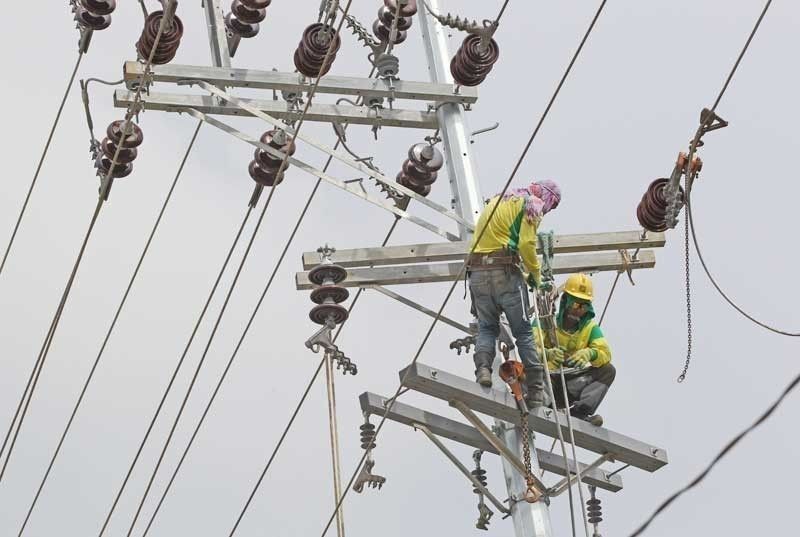Commentary: The real deal behind Philippines' power crisis

Since the first quarter of this year, the Luzon grid has been dealing with continuous thinning or zero reserves, prompting the raising of yellow and red alerts.
A “yellow alert” is issued by the National Grid Corporation of the Philippines when operating reserves have dropped below the required contingency level, often equivalent to the capacity of the largest running generating unit in the grid, or the 647-megawatt coal-fired power plant in Sual, Pangasinan, in the case of Luzon. Meanwhile, a “red alert” status is raised when contingency reserves reach zero, indicating the possibility of power interruptions and outages in the grid.
Based on PowerPlant Watch, the regular demand and supply monitoring initiative of consumer advocacy group CitizenWatch Philippines, a series of almost ten yellow alerts have been recorded in the first half of 2019 alone, particularly on March 5 to 8, April 1 to 5 and 8. In comparison with the previous years, the Luzon grid experienced only seven instances of yellow alerts in 2018 and only three during the same period in 2017.
Just a few days ago, on April 10, a red alert in the Luzon grid was announced for the first time due to insufficient operating reserves brought about by the forced outage of the Sual Plant (647 MW), unplanned outage in other plants (1,702 MW in total), and limited capability of some plants due to de-ration.
More disturbing is how the Luzon grid was quickly placed on red alert the next day, or on April 11, despite the assurance from the Department of Energy that there are sufficient reserves throughout the dry season. While this may seem like a small number, the issuance of two consecutive red alerts was more than those issued in the previous years. In 2018, the Luzon grid was not placed under any red alert status while only one red alert was announced in 2015 and 2017.
The grid’s insufficient power reserves have consistently left Luzon, home of the Philippines’ national capital region, either on the brink of a shortage or saddled with rotational brownouts. The situation has led not only to inconvenience among consumers but also to increased electricity cost and economic loss, not to mention recurring fears of collusion among power producers.
Recurring problem
The consistency of yellow and red alerts is not new. In 2013, allegations of collusion to create an artificial power shortage and justify a major increase in electricity rates among the power plant operators were investigated because of the simultaneous shutdown of several key power plants that coincided with the scheduled maintenance shutdown of the Malampaya natural gas facility in Palawan. This shutdown forced distribution utilities to purchase their supply from the Wholesale Electricity Spot Market, where prices had already increased.
The fact that this problem happened six years ago and we are still experiencing the same situation signals that there is something wrong with how we are dealing with the supply situation.
While many energy projects are in the pipeline, these are not being realized due to the delays in the Energy Regulatory Commission (ERC). Quite a number of industry players assert that there are no new project commitments beyond the power needs of the industry due to the “regulatory overhang or delay of the several power projects still not decided by the ERC.”
Further, this cartel-like collusion of power generators should be thoroughly investigated. Historical data shows that there is a correlation between the decrease of supply and increase of electricity prices.
Power crisis will peril polls
Faced with a potential crisis, safeguards should be established to ascertain that the right of suffrage is not undermined in the upcoming May elections.
The confidence of the Filipino people in our democracy rests in the security of their votes. Stable and secure power is vital in ensuring that proceedings of our automated election system are beyond reproach. There should be no room for doubt in the sanctity of elections. Voters should not be left in the dark, literally and figuratively.
Readiness to respond to a possible power crisis
One of the key priorities for sustaining our rapid and more inclusive growth is to preserve consumer confidence, as reported by the World Bank. Careful considerations should be done in favor of consumers who will bear the brunt of the increase of basic commodities, including electricity.
In achieving this goal, the government must immediately address the looming power crisis by investigating these persistent power brownouts and to take appropriate actions, pursuant to their mandate to regulate industry players.
As the demand for electricity increases, the need for more generation grows. Regulatory delays in the approval of power generation projects should be thwarted. It is not enough that power projects are committed, they should be executed and implemented.
Given the high forecast demand and anticipated economic growth, the government must be ready to address the country’s power situation head on. If left unresolved, this potential power crisis will shatter this government’s economic growth and development.
Atty. Hannah Viola is a convenor at CitizenWatch Philippines. She is also an energy and infrastructure fellow at think tank Stratbase ADR Institute, a partner of Philstar.com.
- Latest





























